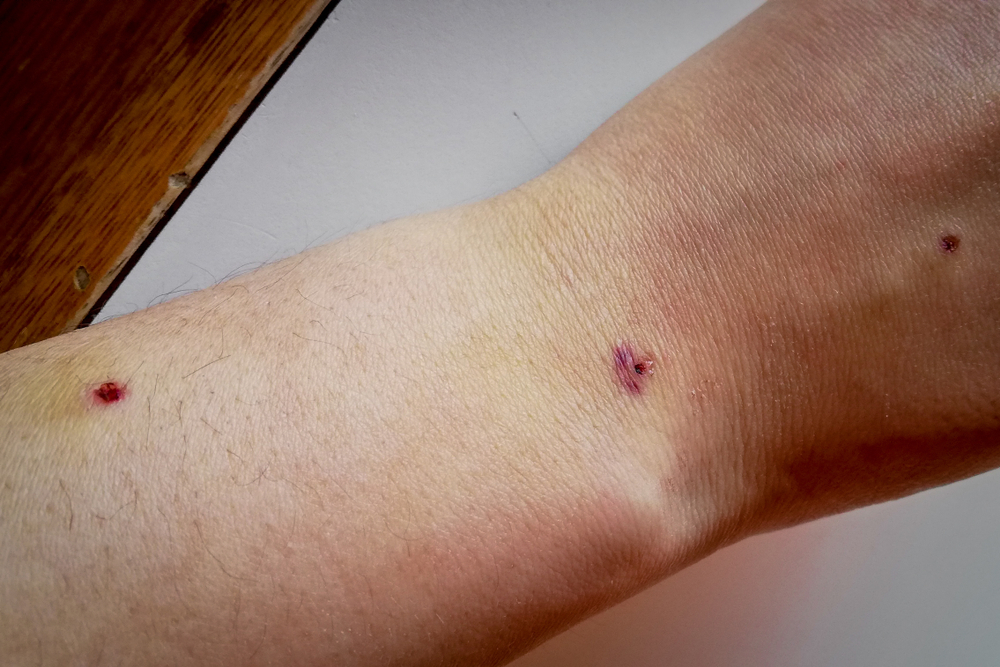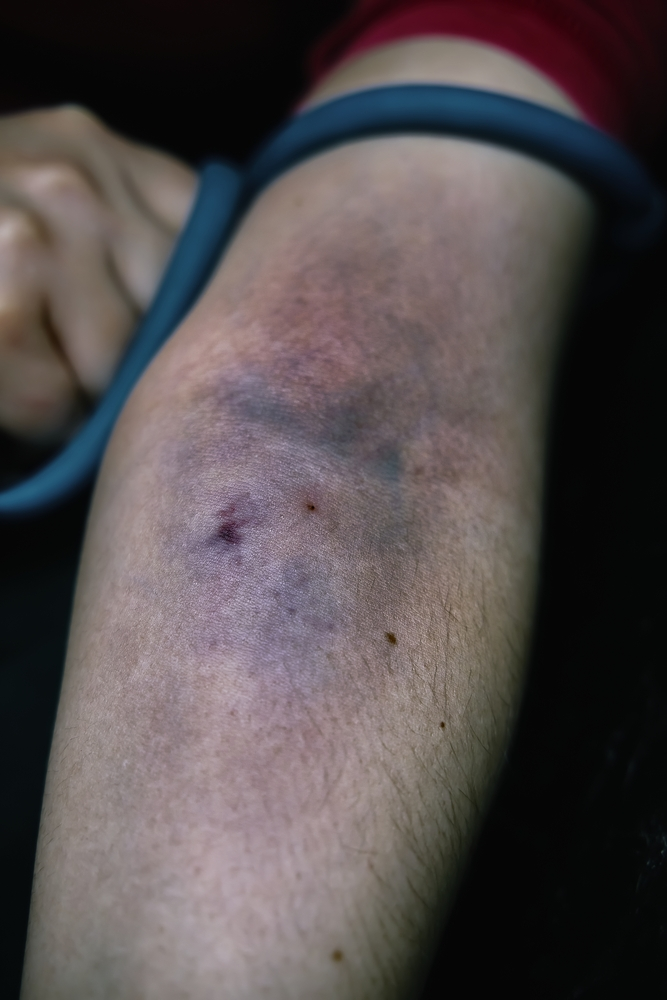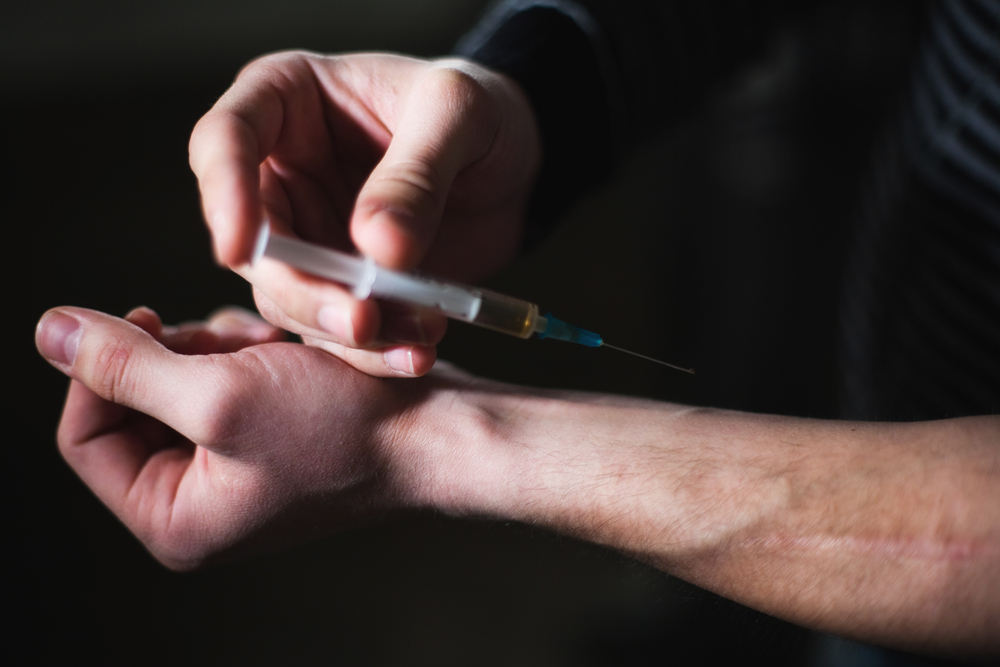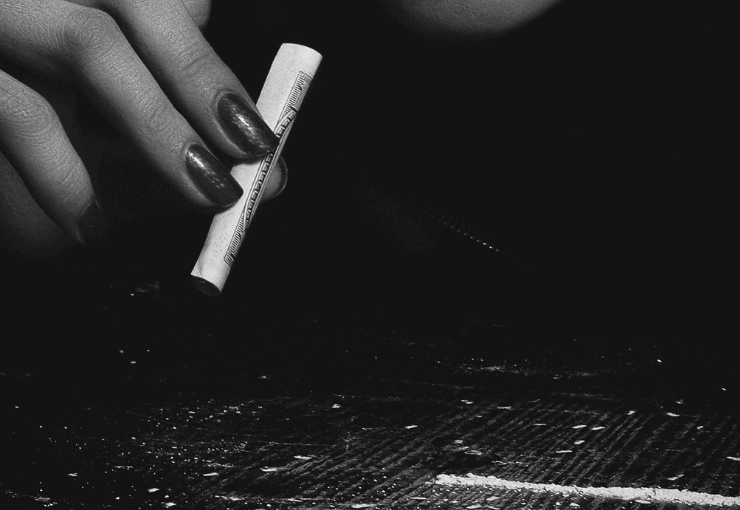If you’re concerned a loved one is abusing drugs, you may wonder, “What do track marks look like?” Heroin, an opiate, is one of the most commonly injected drugs. In the last decade, the number of individuals addicted to heroin who first injected heroin jumped from 8.7 percent to 33 percent. If you’re certain your friend or family member is abusing heroin, this post will assist you in helping them. Heroin addiction is potentially treatable if detected early. It’s vital to catch heroin addiction as soon as you can and help your loved one recover.
What are Heroin Track Marks and What Do They Look Like?
Track marks are areas of discoloration along a vein that have been damaged from injecting drugs intravenously. They are frequently visible on the forearms, where visible veins are present, although they can be anywhere on the body where injections have taken place. Puncture wounds or discolored and scarred veins are both common examples of track marks.
Track marks can appear as tiny holes in the skin that are in various stages of healing. New puncture wounds may appear bright red or pink. Scabs or new scar tissue may cover the skin. Old track marks may resemble white or light pink scars that have healed. If the vein itself becomes scarred, it may appear darkened and noticeable in some instances. Track marks may also appear as bruises. People will often wear long-sleeved shirts and jackets to conceal the track marks on their arms, even if the weather doesn’t require warm clothing.
Where are Heroin Track Marks Usually Found?
The veins in the arms and hands are the most common sites for injection. Because these veins are easy to find and inject into, addicts often wear long-sleeved garments to conceal track marks and track mark scars. In addition to targeting the arms and hands, vein injection can also be performed on the legs and feet if the veins in those areas have become damaged or collapsed.
Because veins are visible in these areas, they are frequently used after the veins in the arms and hands have been filled. Accessing veins in the legs is more difficult than accessing them in the arms and hands, but it is much easier to inject the feet than it is to cover them up afterward.
Other Signs of IV Heroin Use
Collapsed Vein
Intravenous drug use can be identified by one or more collapsed veins. The human body’s veins carry blood from one location to the next in order to keep the body healthy. A substance can be injected repeatedly into the same vein, causing it to collapse and stop functioning properly. You may be able to spot a collapsed vein, even if it is under the skin.
Infection
An injury that is not properly cared for can become infected. Injecting drugs intravenously can result in physical damage to the skin and blood vessels, especially if the same spot is used repeatedly. Wearing the same shirt or pants for several days in a row, for example, can result in an infection. Poor personal hygiene can also contribute to infections from injections.
Skin Popping
Those who inject drugs into their muscles rather than their veins are more likely to experience skin popping; however, skin popping due to IV drug use is rare. Muscles are injected with drugs, resulting in lumps under the skin. These lumps will become scar tissue as it builds. The lumps appear to ‘puff out’ the skin as a result of the condition. Lumps may be visible on the forearms and lower legs in some cases.
Soot Tattoo
A soot tattoo, a discolored spot beneath the skin, can result from the use of a flame beneath the needle before injecting it into the skin in order to sterilize it. The soot that accumulates on the needle goes directly into the body and produces dark spots that become even darker over time. Some people receive professional or amateur tattoos in order to hide those spots.
What Causes Track Marks?
A track mark is a sign of repeated injections to the same vein, resulting in skin and vein damage, scabbing, and scar formation. If these wounds become infected, the resulting damage may be even more evident.
It is possible to get track marks if you use dull or dirty needles to inject. Injecting with a dull or used needle may result in wounds and scarring as it is not sharp enough to pierce the skin cleanly. In addition, not cleaning the skin surface prior to injection may also result in track marks. Inflammation or infection in a vein may occur if bacteria, fungi, or other foreign material is introduced into the skin and vein as a result of puncturing the skin that has not been cleaned.
An unwanted bacteria can be introduced into the bloodstream if a drug solution is not prepared with sterile water. Irritation and inflammation to a vein may also result if the drug solution is too acidic, not acidic enough, or too concentrated.
Risks of Track Marks
Track marks are indicators of intravenous drug use, which can be very dangerous. Here are some of the dangers associated with track marks:
Scarring
Frequent intravenous injections may result in scar tissue formation, especially if injection sites are not allowed to heal before further injections are administered. In addition to scarring, some veins may develop so much scar tissue that they cannot be used for intravenous access again.
Abscesses
Abscesses are painful, swollen masses that are caused by an underlying infection. They are typically the result of bacterial infections and are therefore hot to the touch. Abscesses must be surgically opened and drained to release the buildup of pus and debris. Abscesses are usually the result of bacterial infections, which must be treated with antibiotics.
Infections
Any injection can cause infection, especially if dirty or dull needles are used. Using non-sterile water to prepare drugs may also result in bacterial or fungal infections. If bacteria or fungi contaminate the drug solution, it can cause infections. Bloodstream infections are serious and require immediate medical attention. Bacteria or fungi in the blood may travel throughout the body and cause infections in other organs like the heart and brain if an infection is present.
Collapsed Veins
Repeated injections in the same vein can cause it to collapse since the vein walls don’t remain open enough to permit regular blood flow. It’s hard to inject drugs into a collapsed vein, and persevering might prove fruitless, excruciating, and result in inflammation or swelling.
Will Heroin Track Marks Heal and Go Away?
It’s common for track marks to heal and leave minimal scar tissue behind. Older track marks that haven’t been re-punctured can be almost invisible in certain cases. The damage to the skin and veins may sometimes be irreversible even after healing occurs, even in areas where the skin is particularly thin such as the tops of the hands and feet.
In order to prevent track marks, one should avoid injecting drugs intravenously or using sharp, clean needles to prepare drug solutions. Wounds should be kept clean in order to promote optimal healing. Using medicated ointment and covering wounds can also help to optimize healing. Using scar reduction products on newer skin wounds can help them heal quicker. These products are not as efficient on older scar tissue.
Other Signs of Heroin Addiction
Heroin addiction may manifest in a variety of ways, depending on an individual’s genetic make-up, the quantity of drug they consume, the frequency with which they consume it, and their dependence on the drug. The following are the most common symptoms of heroin addiction:
- Extreme mood swings
- Anxiety
- Irritability
- Secrecy
- Self-isolation
- Financial hardship
- Legal troubles
- Disorientation
- Change in appearance
- Weight loss/gain
- Insomnia
- Increased sleeping
- Lack of personal hygiene
- Possession of syringes, spoons, or other paraphernalia
- Neglecting responsibilities
- Track marks
- Loss of interest in things once enjoyed
Get Help for Heroin Use at Asheville Recovery Center
You now know the answer to the question, “What do track marks look like?” This will enable you to identify drug addiction signs in your loved one as soon as possible. The sooner you recognize these signs, the sooner you can speak with your loved one and get the help they need. Your support and the expertise of our treatment specialists will help your loved one get a new start in life.
You can reach out to Asheville Recovery Center if you want to know more about your drug recovery program options. We are happy to answer any questions, address any concerns, and help you make the right decision for your loved one. If you’d like to know what you’re able to do for your loved one, we’re ready to help.








